Before anything else, ladybugs are also called ladybirds and lady beetles. To clarify their classification, ladybugs are neither birds nor bugs but rather beetles. These tiny insects are scientifically known as Coccinella septempunctata and have more than 400 species in the US alone. But are all of them the same?
Are ladybugs a pest or friendly insect? Generally speaking, ladybugs are beneficial to plants and gardens. They are mortal enemies of dreaded aphids and are friendly to humans. Therefore, ladybugs are not pests. On the other hand, there is one species of beetle similar to ladybugs but are considered pests.

In this article, we’ll explain the nature of ladybugs, including their physical features and life cycle, as well as the reason why they are not considered pests. This article will also discuss the contribution of ladybugs to farmers.
Why Are Ladybugs Not Pests?
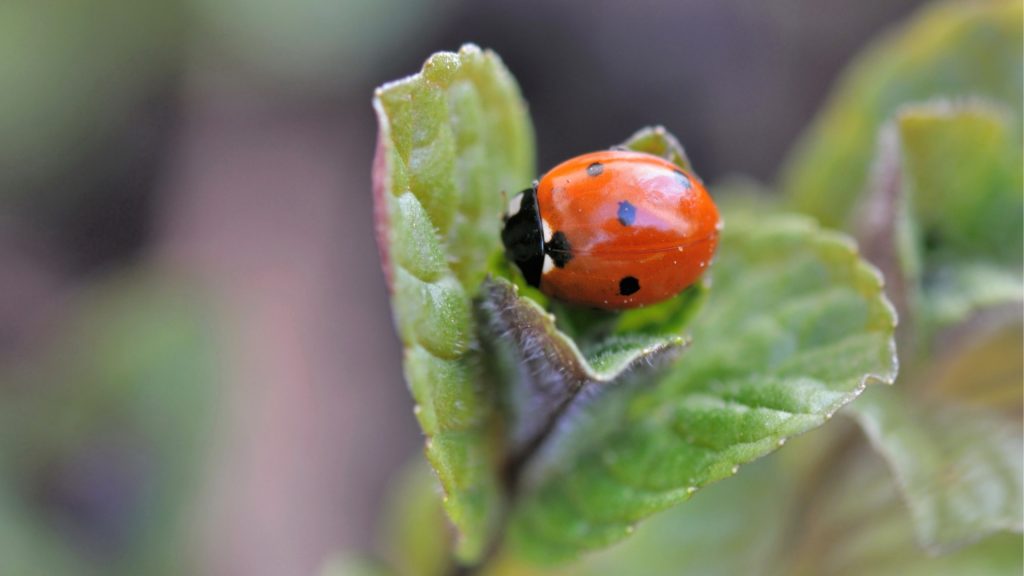
Ladybugs are usually found in gardens, parks, or any area where there are aphids. Aphids are soft-bodied insects that drain the nutrients from plants, damaging the fruit and flowers. They usually grow up to ¼-inch and are nearly visible to the naked eye. Fortunately, ladybugs can easily see them.
Being predators to aphids, ladybugs usually lay their eggs very close to the aphid colonies so they can easily attack the plant-eating insects. No wonder that you can also find ladybugs on grains, vegetables, grains, legumes, and tree crops, patiently waiting for their prey. Hence, you can raise them in your backyard.
Ladybugs rarely bite humans, and lots of people find them cute because of their appearance. They are also found in a famous English nursery rhyme, which goes, “Ladybird, ladybird, fly away home! Your house is on fire, your children all gone…” Many people also considered ladybugs as a sign of luck.
What Do Ladybugs Look Like?
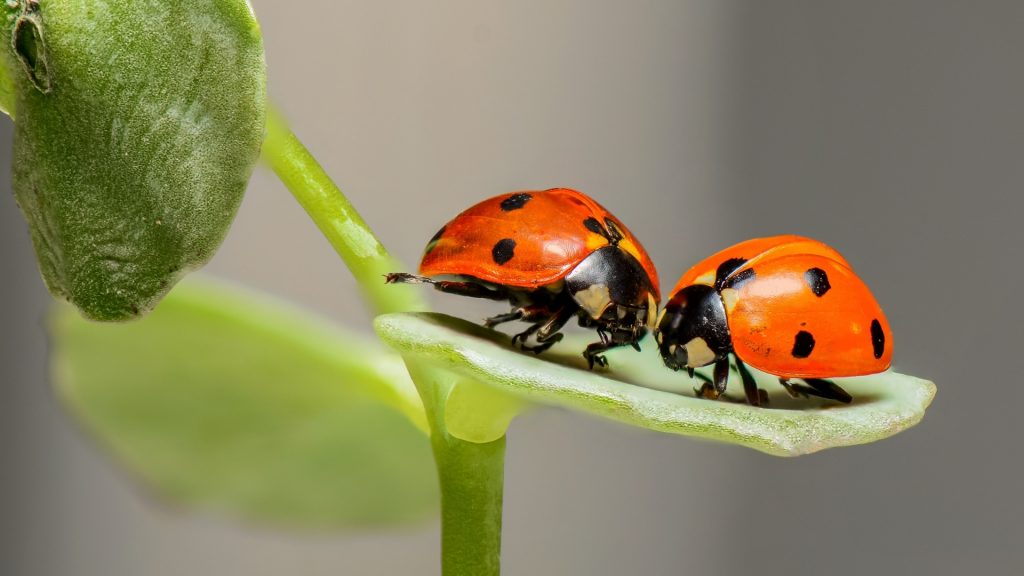
An adult ladybug has an oval body and can grow 1-10 mm, depending on the species. They have a black-and-white patterned thorax, which has two pairs of wings and three pairs of legs. Their body can be black, orange, pink, red, or yellow. On average, females are larger than males.
Ladybugs also have a black head, black antennae, and black legs. They also have seven dark spots on their red wings, which make them so unique. This is also why they are also called 7-spotted ladybugs in the US. These friendly insects are called ladybugs in the US but are called ladybirds in the UK.
In the UK, the name ‘lady bird’ was accounted to its seven spots, said to symbolize the seven sorrows of the Virgin Mary. This is why they are also dubbed as “Virgin Mary’s beetle.” The name ‘ladybird’ was first applied to the beetle back in 1674 and spread in many countries in Europe.
What Is the Life Cycle of Ladybugs?
Just like most insects, ladybugs undergo complete metamorphosis via four stages – egg, larva, pupa, and adult.
Egg stage: The male and female ladybugs will mate to produce fertilized eggs. Shortly after mating, the female ladybug will lay 5-30 eggs in yellow clusters, most of the time, near a colony of aphids.
Larva stage: In two to ten days, the eggs will hatch into larvae, which look like tiny alligators and will have bumpy exoskeletons. As expected, they will feed on aphids. But if there is a shortage of aphids, the larvae will eat the unfertilized eggs. They will also eat mites, adelgids, scale insects, as well as other insect eggs.
The ladybug larvae are usually black or gray with some yellow spots and have elongated bodies. They can grow between 1 mm and 1 cm in length and will pass through four instars within 20-30 days. Although they are spiny and look scary, they don’t sting humans. Therefore, they are not dangerous.
Pupa stage: After a few weeks, the ladybug larvae will become a pupa. Depending on the temperature and species, the pupa stage usually lasts 3-12 days.
Adult stage: Once the adult emerges, it will immediately search for prey and prepare for hibernation. An adult ladybug usually lives between a few months to more than a year.
Can Ladybugs Defend Themselves?
Ladybugs can defend themselves by using only their color. The bright colors of their body will warn their predators that they are unpleasant and offensive. Once you disturb them, they will release a yellow, odorous fluid or substance from their joints that can stain your hands.
Are Ladybugs Effective Against Aphids?
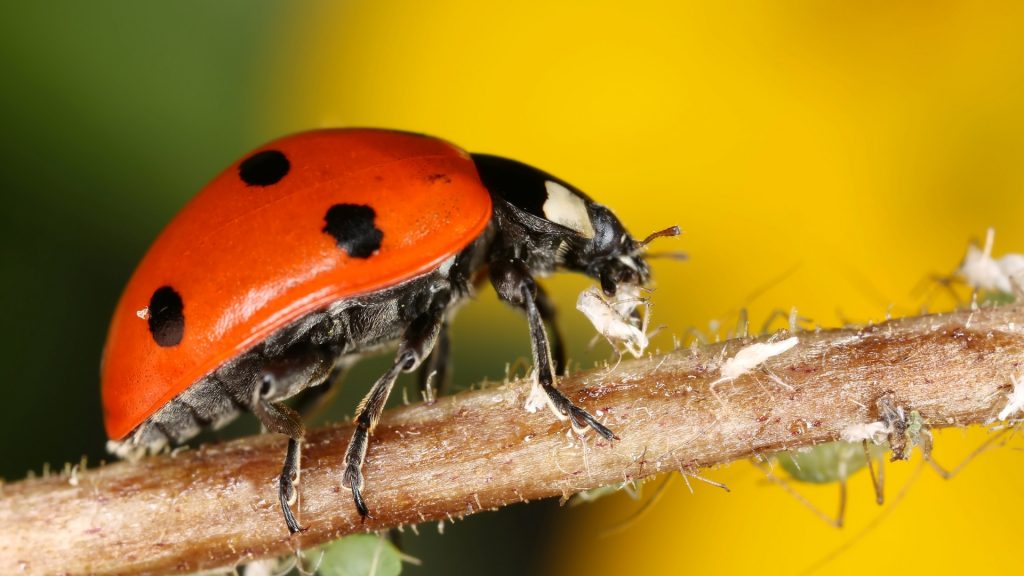
Ladybugs are very effective against aphids. The ladybug larvae can eat 200 to 300 aphids while it is growing. Once it becomes an adult, it can consume several hundred aphids a day.
Meanwhile, the convergent ladybug larvae can eat 50 aphids per day. Interestingly, it is also the same amount that the adult can eat.
Ladybugs need to eat lots of aphids so they can lay more eggs. They are known to be effective predators if there is an abundant supply of aphids. On the other hand, they tend to be less effective if there is a shortage of supply. In case that happens, they are likely to eat mites, scale insects, and other insect eggs.
Nonetheless, researchers believe that ladybugs that feed on scale insects tend to be smaller than usual, grow slowly, lay fewer eggs, but live longer. On the other hand, those that feed on aphids were seen to be bigger. They also tend to grow, move and mature faster and lay more eggs in huge clusters.
Do Ladybugs Eat Other Plant Pests?
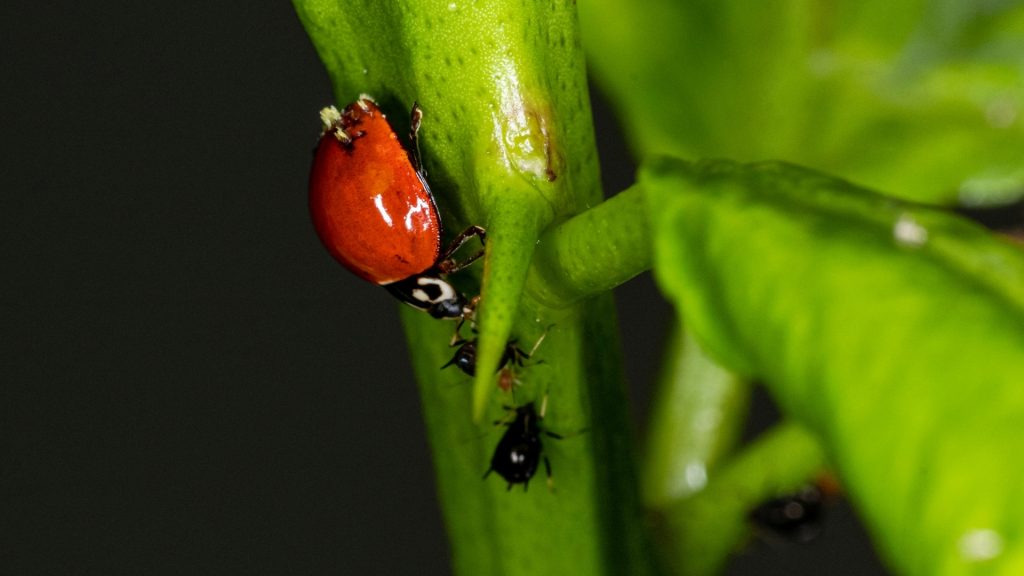
Ladybugs also eat other plant pests. Aside from aphids and some scale insects, they also enjoy eating other insects that belong to the Homoptera group. In general, these insects suck plant juice using their antennae. These plant feeders include cicadas, lanternflies, treehoppers, psyllas, and leafhoppers.
The contribution of the ladybugs to the biological control of these pests (especially aphids) has been very beneficial to lots of farmers. For this reason, some species of ladybugs are now available commercially and are being released in gardens and landscapes to reduce or eradicate aphid colonies.
Do Ladybugs Need Special Care to Control Aphids?
According to recent research, ladybugs need special care so they can be effective predators to aphids. Before releasing ladybugs to manage aphids, consider the following tips:
- Store the ladybugs in a refrigerator unless you will release them in a garden or landscape. Otherwise, they will deteriorate rapidly. They are also likely to dehydrate at room temperature.
- There should be a huge supply of aphids before releasing the ladybugs. As mentioned earlier, ladybugs are always hungry for aphids and are more effective if they eat lots of them. You should release lots of ladybugs so they can eliminate the aphids faster, especially if the garden is heavily infested.
- Release the ladybugs in the early evening. If you release them during the afternoon or daylight, they are very likely to fly away.
- Spray some water on the plants before releasing the ladybugs. This will attract them to stay because they have something to drink while waiting for their prey.
Note, however, that there is no such thing as a perfect release. This means that no matter what you do, there will always be a few ladybugs that will fly away in a few days and will never come back. Nevertheless, the key here is not to use insecticides. They contain toxic chemicals that can harm or kill your ladybugs.
What Are Asian Ladybugs, and Why Are They Pests?
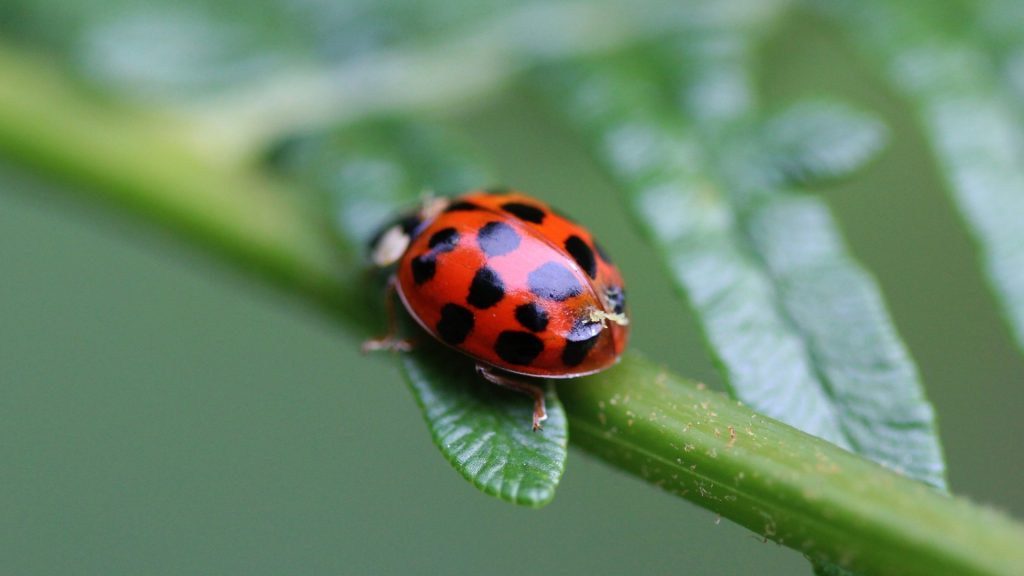
As mentioned earlier, there is a species of beetle that look like ladybugs but are considered pests. Meet the Asian ladybug, the direct opposite of ladybugs when it comes to behavior. These species don’t only suck the nutrients of plants but also bite humans and pet dogs. They also enter your house through holes and cracks.
Both the ladybug and the Asian ladybug have dark spots on their wings. However, the black spots on Asian ladybugs are usually more than 20, while ladybugs only have seven. But more importantly, Asian ladybugs have a letter ‘M’ marking in the white area behind their head. This makes them unique from other species.
Scientifically known as Harmonia axyridis, Asian ladybugs were originally introduced to control aphids and scale insects. Although they also belong to the Coccinellidae family, just like the ladybugs, this notorious beetle is now considered one of the most aggressive and invasive insects in the world.
Asian ladybugs don’t cause too much damage to homes and landscapes. However, they invade houses during colder months to seek warmth. Once they do, they hide in walls, furniture, and fabrics. Just like ladybugs, they release yellowish, smelly fluid when disturbed. They also bite, although not lethal.
Related: Ladybug Control: How to Get Rid of Ladybugs?
List of Sources
Bessin, R. (2019). Ladybugs. University of Kentucky.
Seven-Spotted Ladybug. (2018). University of Wisconsin-Milwaukee.
Frank, J. H., Mizell III, R. F. (2014). Common name: Ladybirds. University of Florida.
Flint, M. L. (2014). Lady bugs need special care to control aphids in the garden. Agriculture and Natural Resources, University of California.
- How to Get Rid of Turtles | Proven Long-Term Solutions! - August 26, 2023
- How to Get Rid of Kingsnakes | Easy & Humane! - August 26, 2023
- How to Get Rid of Northern Water Snakes | Best Solutions and Preventative Measures! - August 19, 2023
